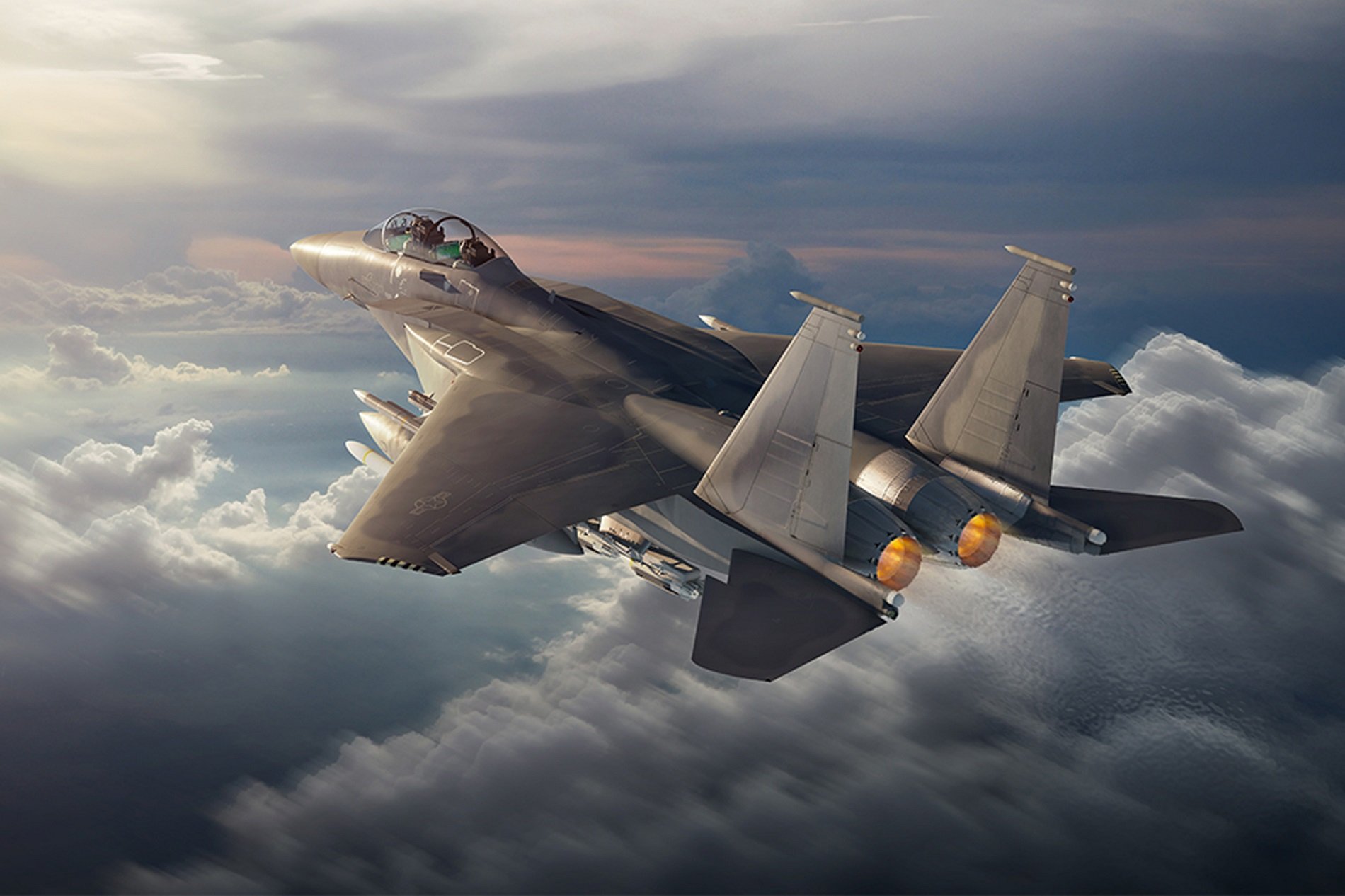The New Boeing F-15EX Fighter Could Be Stationed Close to China
Boeing has touted the F-15EX's capabilities, describing it as a 21st-century evolution of the proven F-15 Eagle. It could soon make its way to Japan to deter China.
The U.S. Air Force to Station Three Dozen F-15EX Fighters in Japan - A year ago, the first of the United States Air Force's F-15 Eagles bid farewell to Japan. Aircraft from the 18th Wing departed from Kadena Air Base, Japan, marking the first of the Eagles to fly out as part of a phased withdrawal from the base. The number of aircraft departing was not disclosed, but photos appeared to show eight Eagles preparing for a final takeoff.
The F-15EX Is Headed to Japan to Deter China?
The Air Force had begun retiring the aging fleet of F-15C/D Eagles that have been in service for more than four decades, citing reliability and maintenance issues with the old warbirds. Some of the F-15s from Kadena went to Air National Guard units in the United States, while the remainder was sent to the Air Force boneyard at Davis-Monthan Air Force Base (AFB), Arizona.
There had been calls from some in Washington to permanently deploy a number of fifth-generation Lockheed Martin F-22 Raptors to Japan that had been scheduled for retirement. The argument was that those aircraft could be upgraded instead of sent to the boneyard – and could serve as a serious deterrent to China.
However, it was reported this week that the United States Air Force is considering a plan to replace the forty-eight F-15C/Ds that were stationed at Kadena Air Base with thirty-six F-15EX Eagle II fighters. This news comes after the commander of the Pacific Air Forces downplayed any suggestion that different aircraft could be rotated to Okinawa.
"I would not expect us to go with rotational forces in perpetuity," General Kenneth Wilsbach, commander of the U.S. Pacific Air Forces, told Nikkei Asia on Dec. 13.
However, Wilsbach did not mention a time frame for permanently deploying fighters, even Congressional sources told the outlet that the Air Force plans to station three dozen F-15EX jets at Kadena.
In what has been described as a shift away from post-Cold War tactics, the U.S. Air Force has expanded access to bases in the Philippines, Papua New Guinea, and Australia, which has spread aircraft out from bases in Okinawa and other positions that could be targets of China’s precision strikes.
However, such rotational deployments could create a lack of jet fighters between rotations while it would not guarantee a permanent presence, which could make the U.S. commitment to the Indo-Pacific look weak, according to experts cited by Nikkei Asia.
A 21st Century F-15 Eagle
Boeing has touted the F-15EX's capabilities, describing it as a 21st-century evolution of the proven F-15 Eagle. The twin-engine, all-weather tactical F-15 has had one of the most successful track records of modern fighters, with more than 100 victories and no losses in aerial combat.
Yet, critics of the program have also been quick to suggest the F-15EX is simply a new model of an old warbird even as supporters note its current configuration includes the highly-capable AN/APG-82 active electronically-scanned array (AESA) radar and the powerful Eagle Passive/Active Warning Survivability System (EPAWSS) electronic warfare suite.
F-15EX FAQ and Profile
In 2020, the Department of the Air Force awarded a nearly $1.2 billion contract for its first lot of eight F-15EX fighter aircraft, which will replace the oldest F-15C/Ds in the current fleet. That purchase was approved in the fiscal year 2020 budget and 12 additional aircraft were requested in the FY21 budget. Pending Congressional approval, over the next five years the Air Force could receive up to 200 of the 21st century version of the Cold War fighter.

The F-15EX is a two-seat fighter with capabilities that are completely unique to the Air Force’s version. This includes new fly-by-wire flight controls, improved weapons stations, and enhanced electronic warfare suite, as well as advanced radar and computer, conformal fuel tanks and a strengthened airframe. The Eagle II will also feature a deep magazine that will allow it to carry a load of advanced weapons – with a 28% larger payload than the older F-15E. However, the Eagle II will require only minimal transitional training and little additional manpower from the older versions of the F-15.
It will require little to no infrastructure changes, and the Air Force has estimated that F-15EX Eagle IIs shares about 70 percent of parts with the current F-15C and F-15E variants that are being replaced. This could result in a fighter that will be easier to build and quicker to put into service.
According to Boeing, the F-15EX can also enable rapid technology insertion that will ensure the platform’s relevance for decades to come. Necessary upgrades can be supplied via an Open Mission Systems Architecture, which can deliver Advanced Battle Management Systems (ABMS) capabilities, allowing the F-15EX to operate independently while isolated but also to reconnect to the global cloud.
The Air Force isn't the only interested customer in the F-15EX, as Israel is now preparing to send a formal request to the U.S. for 25 of the fighters, with plans to acquire as many as 50 of the aircraft.
Author Experience and Expertise
Peter Suciu is a Michigan-based writer. He has contributed to more than four dozen magazines, newspapers, and websites with over 3,200 published pieces over a twenty-year career in journalism. He regularly writes about military hardware, firearms history, cybersecurity, politics, and international affairs. Peter is also a Contributing Writer for Forbes and Clearance Jobs. You can follow him on Twitter: @PeterSuciu.


